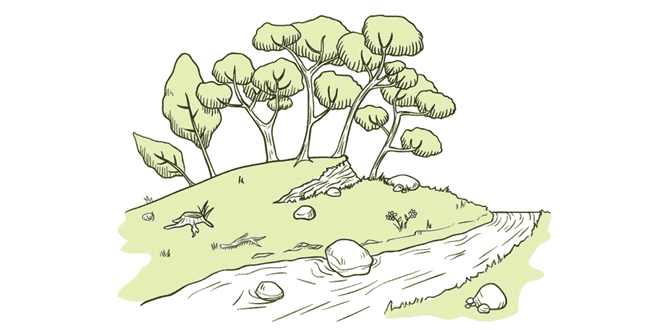Question: Explain the Indus Water Treaty.
Answer:
- The Indus Water Treaty was signed between India and Pakistan in 1960.
- According to the regulations of this treaty India can use only 20% of the total water carried by Indus system.
- This water is used for irrigation in the Punjab, Haryana and the southern and western parts of Rajasthan.
Question: What are the features of Sundarban Delta?
Answer:
- The delta formed by the rivers Ganga and Brahmaputra which is the largest delta of the world is known as Sundarban Delta.
- The delta derived its name from the Sundari trees which grows well in this marshland.
- It is the world’s fast growing delta. d. It is also the home of Royal Bengal Tiger.
Question: What is meant by water divide? Give an example.
Answer: Any elevated area, such as a mountain or upland, separates two drainage basins. Such upland is known as water divide. Ambala is located on the water divide between th Indus and the Ganga river systems.
Question: Which is the largest river basin in India?
Answer: The Ganga basin is the largest basin in India.
Question: Where do the rivers Indus and Ganga have their origin?
Answer: The headwaters of the Ganga, called the ‘Bhagirathi’ is fed by the Gangotri Glacier and joined by the Alaknanda at Devaprayag in Uttaranchal. At Haridwar the Ganga emerges from the mountains on to the plains. The Indus flows through Baltistan and Gilgit and emerges from the mountains at Attock.
Question: Name the two head-streams of the Ganga. Where do they meet to form the Ganga?
Answer: Alakananda and Bhagirathi are the two head streams of the Ganga. They meet at Devaprayag.
Question: Why does the Brahmaputra in its Tibetan part have less silt, despite a longer course?
Answer: The Brahmaputra river, which is known as Tsangpo in Tibet, receives very little volume of water in Tibet so it has less silt there. On the other hand, this very river when enters India it passes through such a region which receives heavy rainfall. As such in India, it carries a large volume of water and larger amount of silt.
Question: Which two Peninsular rivers flow through trough?
Answer: Narmada and Tapi are the two Peninsular rivers, which flow through trough.
Question: Below are given names of a few lakes of India. Group them under two categories – natural and created by human beings.
(a)Wular (b) Dal (c) Nainital (d) Bhimtal (e) Gobind Sagar (f) Loktak (g) Barapani (h) Chilika (i) Sambhar (j) Rana Pratap Sagar (k) Nizam Sagar (l) Pulicat (m) Nagarjuna Sagar (n) Hirakund
Answer:
- Natural Lakes: Wular, Dal, Nainital, Bhimtal, Loktak, Barapani, Chilika, Sambhar, Pulicat.
- Man-made Lakes: Gobind Sagar, Rana Pratap Sagar, Nizam Sagar, Nagarjuna Sagar, Hirakund.
 Class Notes NCERT Solutions for CBSE Students
Class Notes NCERT Solutions for CBSE Students





